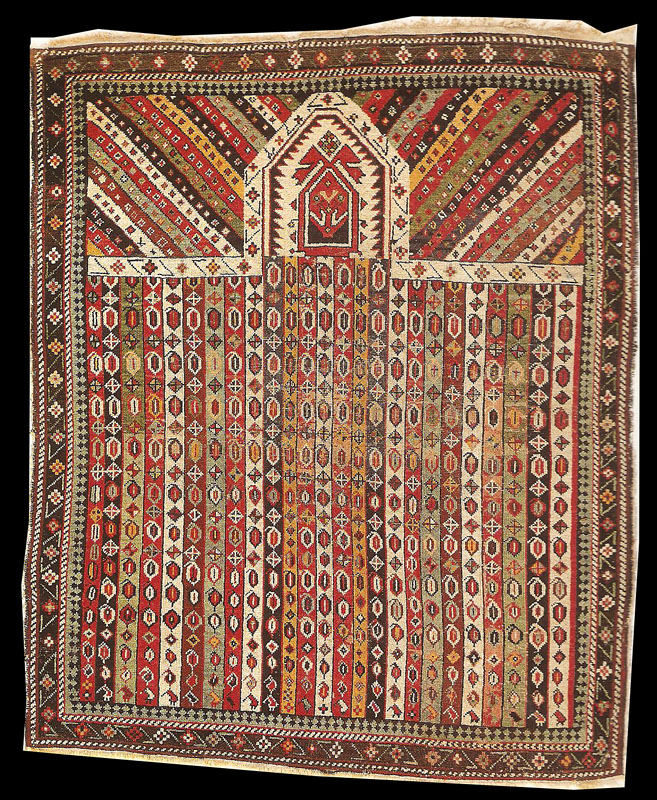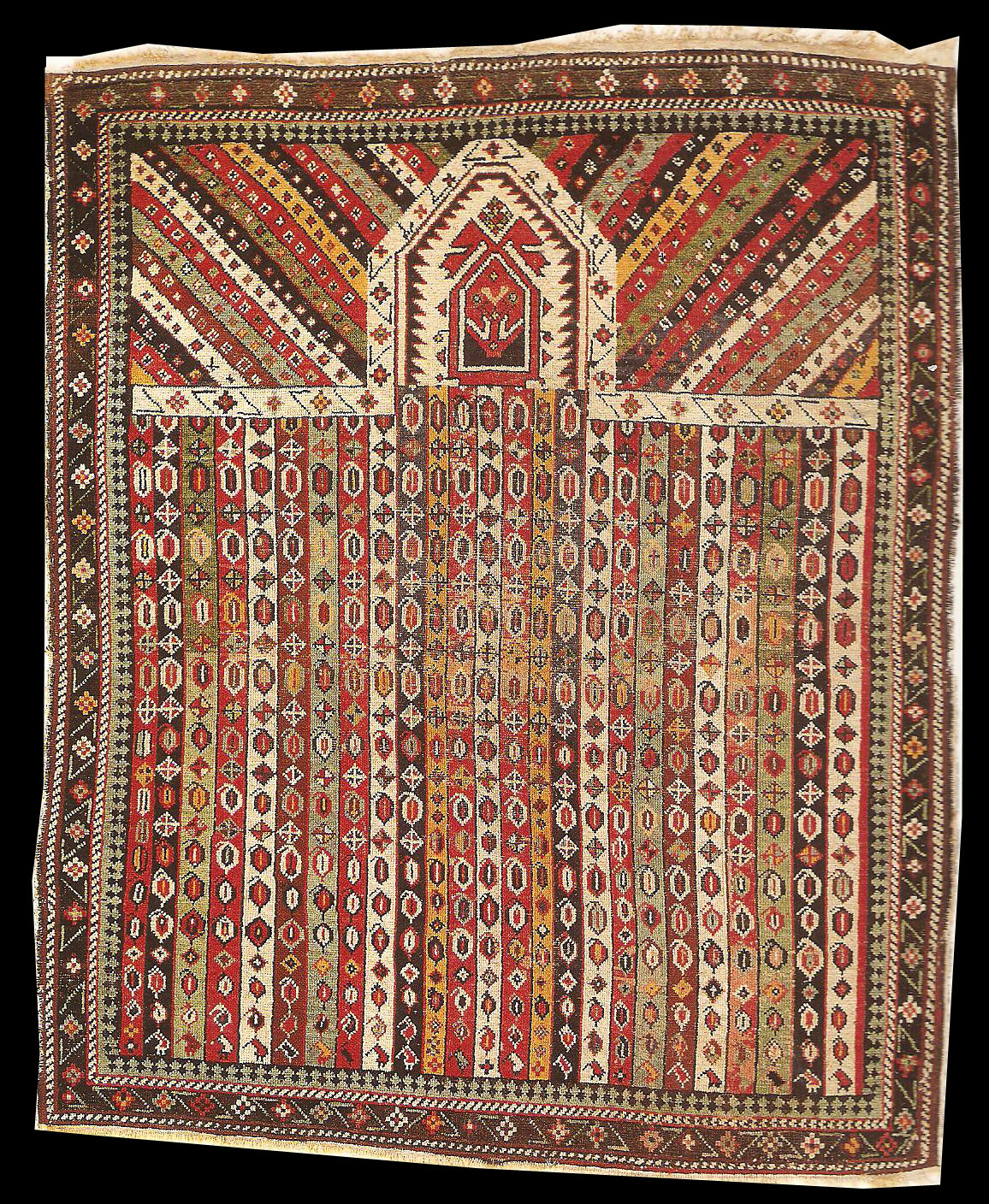|
DAGHESTAN
3rd quarter 19th century 1.12 x 1.32m (3'3" X 4'4")
Striped designs were employed on prayer rugs throughout the Caucasus region,
with the possible exception of the Kazak weaving area. Various
configurations are used, including vertical stripes, diagonal stripes and
chevron bands. Other examples of striped rugs can be seen in plates
27,28,34,40,72,73 and 87. This rug is of a somewhat unusual design, with its
riot of colours (a total of 15 are used) and the alternating pattern of
boteh and quartered diamonds within the bands. The field is filled with 25
polychrome verticalbands, while in the spandrels narrower bands, on
adiagonal bias, are employed.
A slightly smaller but otherwise virtually identical rug is illustrated as
plate no in Bennett, Oriental Rugs, Vol 1: Caucasian.1 The two pieces are so
similar that they may well have been woven as a pain they are almost
certainly the work of the same weaver. Although Bennett's piece was placed
in the Karabagh section of his book, he wrote that 'I cannot help feeling
that a more northeasterly attribution is likely'- (Bennett's book was
essentially an English commentary to an earlier German book by Doris Eder,
and Bennett was committed to the prior attributions. The main borders of
both rugs, as well as the blue -black medachyl inner border, are typical of
Daghestan as are the technical features of this example.
published Ralph Kaffel's Caucasian Prayer Rugs, plate 57
lit: published Ralph Kaffel's Caucasian Prayer Rugs, plate 57

 |


